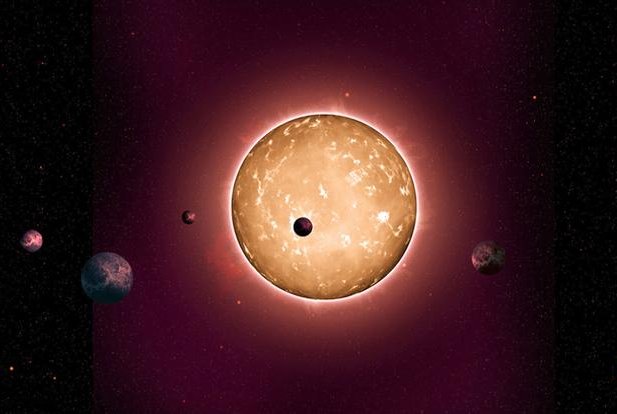An artistic rendering of Kepler-444 and its five rocky planets. Photo by Peter Devine/Tiago Campante/University of Birmingham
BIRMINGHAM, England, May 7 (UPI) -- How long can intelligent life last? Can an advanced civilization persist for billions of years? A new study considers the implications of ancient star systems, their exoplanets and the search for extraterrestrial life.
Earlier this year, researchers announced the discovery of five exoplanets circling ancient star Kepler-444. At 11.2 billion years in age, the star system is 2.5 times older than our own solar system.
As scientists detailed in their recently published paper -- included in the January issue of the Astrophysical Journal -- each new discovery of an ancient habitable world increases the scope of the search for intelligent life forms outside our solar system. Ultimately, that search may answer the question as to whether advanced civilization can be sustained for long periods of time.
As of now, there isn't enough information to answer such questions with any certainty. Only a few other star systems as old as Kepler-444 have been found and studied.
"If intelligent life develops in a system as old as this one, would it still exist or would they extinguish themselves?" Tiago Campante, who led the recent research into Kepler-444, told Astrobiology Magazine.
Any answer, Campante says, would be pure speculation.
Campante is an astroseismologist at the University of Birmingham, in England. Astroseismology is the study of the inner pulsations of stars.
The new research revealed Kepler-444 and its surroundings to be rich in what are called alpha elements -- silicon, carbon, nitrogen and oxygen. These were the first elements to be scattered throughout the universe when the earliest stars died and exploded.
It's been assumed that most rocky planets are rich with iron. But the abundance of alpha elements in the system suggests habitable exoplanets can be made of a wider variety of materials than previously considered -- and that these planets can form in a variety of ways. The realization is yet another reason for scientists to believe there are many more habitable exoplanets out there.
Or, in other words, the search continues.















